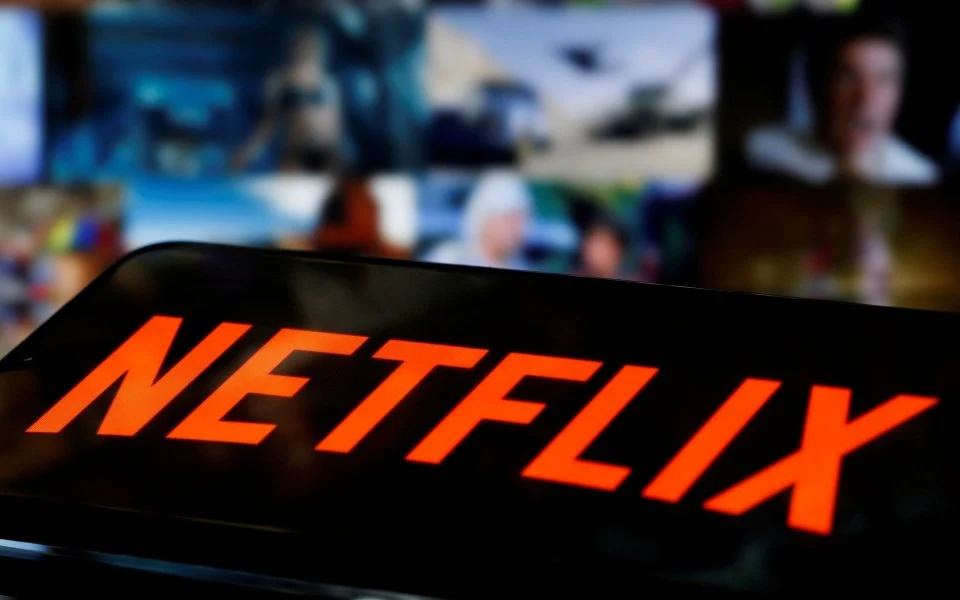Netflix says it lost nearly 1 million subscribers and breathes a sigh of relief

Disaster has been averted at Netflix.
The streaming giant said in its earnings report Tuesday that it lost nearly 1 million subscribers in the second quarter. That’s the largest subscriber defection in company history, but far short of the 2 million it forecast during its dismal first quarter report in April.
When Netflix announced that it lost 200,000 subscribers in the first quarter and expected to lose many more in the second, it suggested to many in Hollywood and on Wall Street that the halcyon days of endless growth in the streaming business had come to an end.
The company still had a rough three months, but its revenue did grow 9% to $7.9 billion, a number that would have been higher had the value of the dollar not pushed down the value of currencies around the globe. Overall, Reed Hastings, a Netflix co-CEO, called it “less bad results.” He added that “it’s tough losing 1 million subscribers and calling it a success.”
Netflix, which now has about 220.7 million subscribers worldwide, told investors that it could add back 1 million in the coming quarter. And Hastings is bullish on the future of streaming. “It’s the end of linear TV over the next five, 10 years,” he said during a taped earnings call after the close of trading Tuesday.
In a letter to shareholders, Netflix said it would keep its focus on providing streaming content to subscribers and not worry about other potential revenue streams, as its primary competitors do.
“This freedom means we can offer big movies direct to Netflix, without the need for extended or exclusive theatrical windows, and let members binge-watch TV if they want, without having to wait for a new episode to drop each week,” the company said. “This focus on choice and control for members influences all aspects of our strategy, creating what we believe to be a significant long-term business advantage.”
Netflix has spent the past three months adjusting its business to better meet the challenges it expects to be facing the rest of the year. The company laid off about 450 employees. (It had $70 million in severance costs as a result of the downsizing.) In April, it announced it would introduce a less expensive subscription tier that will feature advertising – reversing its long-held stance to never have commercials on its service. Netflix intends to start its lower-cost advertising tier in the early part of 2023 in a “handful of markets where advertising spend is significant,” a development analysts are cautiously optimistic about.
“Beyond additional subscriptions, ads will also provide an upside to Netflix in the form of a new revenue stream from brands that are eager to reach the platform’s addressable audience,” said Mike Proulx, a vice president at Forrester. “But scaling its ad business will take time.”
And Netflix said it would begin to crack down more forcefully on password sharing in order to effectively monetize the 100 million users whom Netflix said used its service without paying for it. On Tuesday, Netflix said it had introduced two approaches to this in Latin America to learn which is more effective. One allows customers to “add extra member,” and the other allows users to “add a home” for an extra $3 a month.
“Not only were losses not as bad, but expecting growth in Q3, even if it’s modest growth, is probably pretty encouraging to people,” said Richard Greenfield, managing director at LightShed Ventures, adding that the company’s pronouncement that it was expecting substantial free-cash-flow growth in 2023 to be the most significant news of the quarter.
“They’re basically saying that while everyone else in the industry is losing billions of dollars, not only are they making money in 2022 they’re going to make a lot of money in 2023 and beyond,” Greenfield said.
In addition to its business issues, Netflix received fewer Emmy nominations this month than its primary rival, HBO, despite featuring more programming than the cable network and its streaming offshoot, HBO Max. HBO picked up 140 nominations to Netflix’s 105, a reflection of the difficulty of continually producing quality, buzzworthy entertainment.
Wall Street soured on the streaming giant after its first-quarter report, with shares of Netflix down 46% since April and down close to 70% since the beginning of the year. Netflix shares rose more than 5% in after-hours trading Tuesday.
In the second quarter, Netflix lost 1.3 million subscribers in the United States and Canada, compared with a loss of 400,000 for the same period in 2021. It increased revenue 10% and said subscriber retention had improved over the course of the quarter.
Revenue grew 23% in the Asia-Pacific region, where the company added 1.1 million subscribers. In Latin America, subscriptions stayed flat, but revenue increased 19% from a year earlier.
The service was specifically buoyed by the strong performance of Season 4 of “Stranger Things,” which Netflix said had generated 1.3 billion hours viewed, the most for an English-language show. It also benefited from a surge in renewed interest in the songs “Running Up That Hill” by Kate Bush and “Master of Puppets” by Metallica, which were featured on the show.
Netflix’s film gains were more modest. “We’re making good progress in film,” the letter said. “Hustle,” the Adam Sandler basketball movie, generated the most user interest in the quarter, with 186 million hours watched. “Senior Year,” with Rebel Wilson, grabbed user attention for 161 million hours. The company is investing more in animation, announcing Tuesday that it had acquired the Australian animation studio Animal Logic.
“I think it’s really important that in tough economic times, consumers see that Netflix has tremendous value,” the other co-CEO, Ted Sarandos, said in response to a question about how the company sees itself holding up in an economic downturn. He pointed to the film “The Gray Man,” which will become available on the service Friday.
“This is an enormous, big-budget action film that normally people would have to go out and spend an enormous amount of money on to go see, and it’s going to premiere on Netflix,” he said. (The film was released in about 450 movie theaters last week.)
Despite the upbeat forecast for the third quarter, some analysts remain concerned that the series and movies Netflix has coming the rest of the year will suffer in comparison with its competitors’ offerings.
“To me, the big issues are the quality of the content,” said Matthew Harrigan, an analyst at Benchmark. He pointed to HBO, which will be releasing its “Game of Thrones” prequel, “House of the Dragon,” in August, while Amazon is unveiling “Lord of the Rings: The Rings of Power” in September.
“‘The Crown’ on Netflix is probably the highest-profile Q4 show they have,” he added.
This article originally appeared in The New York Times.






